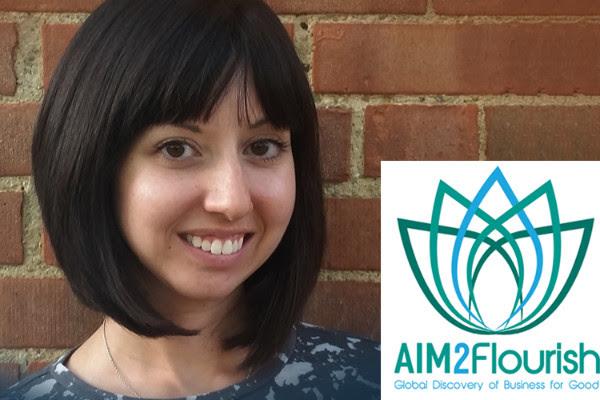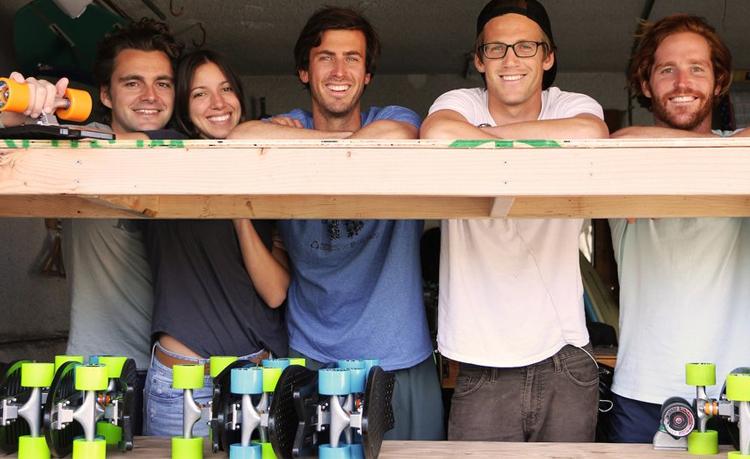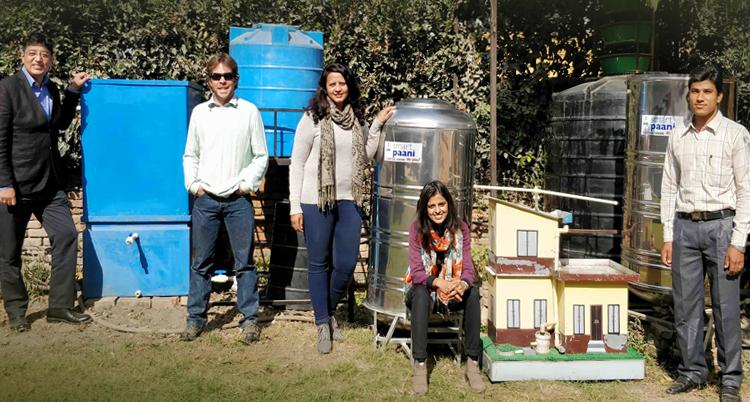AIM2Flourish: business Education Meets Business for Good
By Megan Buchter, Operations Manager, AIM2Flourish at Fowler Center for Business
AIM2Flourish: Business Education Meets Business for Good
A new generation of business students is becoming aware of the opportunity to do good and still be profitable in their current and future careers. Overwhelmingly, millennials say that they are looking for careers that provide good work-life balance and give them a sense of purpose over simply making money. AIM2Flourish, a two-year-old initiative, offers a class assignment that connects students one-on-one with business leaders for insight and inspiration. In the process, students discover first-hand how business can be a force for good, contribute to a global database of positive business stories, and feel more prepared for career success.
The AIM2Flourish assignment positively changes students’ mindsets about business’ goal of being the best in the world to being the best for the world, and how they think about their own potential to be positive leaders. As part of the AIM2Flourish curriculum students learn from their professors about the strengths-based Appreciative Inquiry approach developed at the Weatherhead School of Management, and the United Nations Sustainable Development Goals (SDGs), or Global Goals. Then, students leave the classroom to conduct in-person interviews with business leaders, write stories about positive and profitable business innovations, and publish them on AIM2Flourish.com. Business students worldwide have published 925+ inspiring stories about purpose-driven businesses that do good and do well.
Here are two examples of companies profiled on AIM2Flourish.com, run by millennials who are out to change the world with their drive, passion, and dedication to be a force for good. Both companies were awarded an inaugural Flourish Prize in 2017. These annual prizes recognize the 17 best student-written innovation stories published each year on AIM2Flourish.com – one for each of the 17 Global Goals.
Bureo - was established in 2012 to provide a tangible solution for preventing plastic pollution in our oceans and to initiate social change. The innovation addresses UN Global Goal 14: Life Under Water.
Discarded fishing gear has been recognized as the most harmful form of ocean plastic pollution. For fishermen, this material is a burden to manage at its end of life. Bureo has developed a circular economy model that enables discarded nets to be transformed into innovative products and a new material source. In addition, if any of these products meet their end of life, Bureo rewards their customers for returning the products to Bureo. Focusing on one of the largest fisheries in the world, Bureo launched its first fishing net collection and recycling program, known as Net+Positiva,[4] in Chile in 2013.
Through life cycle assessment and a shared-value business model, Bureo partners directly with fisheries to provide a positive end-of-life solution to their discarded gear. The company achieves this with a supply chain that produces a regenerative resource known as NetPlus™ material, the first certified plastic to have a positive impact on people and the planet. Utilizing NetPlus™ material, Bureo has released the first line of skateboards, sunglasses, surfboard fins, and Frisbees made from recycled fishing nets. Bureo is now setting out to scale its solution for discarded fishing nets by collaborating with organizations that are willing to go beyond industry standards by innovating new applications for Bureo’s NetPlus™ material.
Read more about Bureo here- http://greenmoneyjournal.com/aim2flourish-business-education-meets-business-for-good
SmartPaani - The Kathmandu Valley, the capital area of Nepal, has faced a chronic water shortage for the past two decades. While the daily water demand is approaching 400 million liters per day, the actual water supply is around 90 million liters per day in the dry season and 140 million liters per day in the wet season. This forces reliance on alternative sources, especially groundwater, which is depleting at more than 4 times the rate of recharge.
Rainwater is a relatively untapped resource. The Kathmandu Valley receives an average of 1.4 meters of rainfall annually mostly between May and September. Previously this rainfall would percolate through the rice fields into the shallow groundwater, providing water through wells and traditional stone taps known as Dhungedharas. Due to urbanization, much of this natural recharge is being blocked and most wells go dry soon after the monsoon season.
Read more about SmartPaani here- http://greenmoneyjournal.com/aim2flourish-business-education-meets-business-for-good




